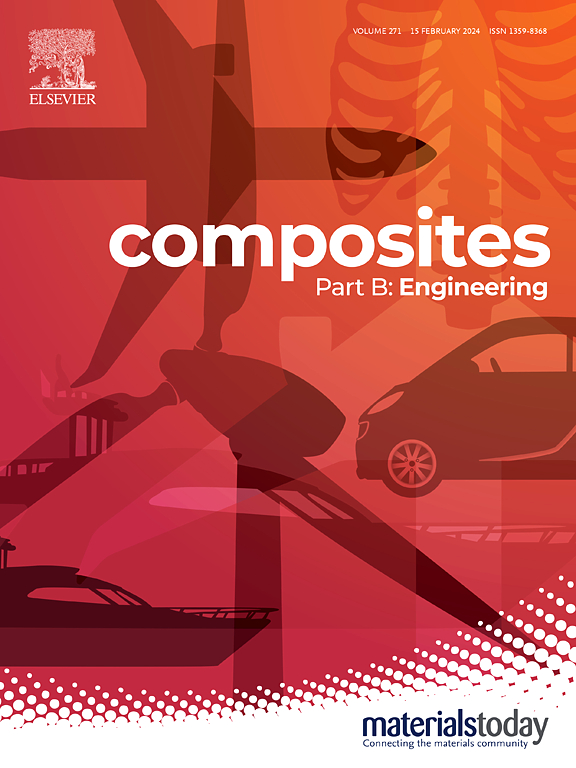A step toward digital twin accuracy in composite manufacturing: Pioneering contour method in polymer composites
IF 12.7
1区 材料科学
Q1 ENGINEERING, MULTIDISCIPLINARY
引用次数: 0
Abstract
Digital twinning is revolutionizing composite manufacturing by optimizing product design and enhancing structural integrity through total stress assessment. However, accurately validating residual stress in numerical simulations remains a significant challenge. The present research pioneers the application of the contour method to non-conductive polymer composite materials using diamond wire cutting, breaking away from its traditional use on conductive materials. It establishes a robust experimental framework for assessing and refining numerical simulations in digital twinning of composite structures. A simple epoxy-carbon fiber reinforced cross-ply laminate with unbalanced asymmetric layup is employed in this study. It is ensured the material is elastically deformed during cutting by comparing the operating temperature and the glass transition temperature determined using Differential Scanning Calorimetry. The cut surfaces are thoroughly assessed using optical, confocal, scanning electron microscopy and high-resolution surface topological scanning to validate the contour method assumptions. This includes characterization of the microstructure, material defects and cutting artefacts affecting the deformation topology of the cut surfaces. The paper sets a minimum resolvable length scale for residual stress, considering the size of constituents and surface roughness caused by diamond wire cutting. Finally, through thickness Residual stresses of cross ply laminate measured by the Contour Method is presented and validated against Pulse-method based slitting analysis.
求助全文
约1分钟内获得全文
求助全文
来源期刊

Composites Part B: Engineering
工程技术-材料科学:复合
CiteScore
24.40
自引率
11.50%
发文量
784
审稿时长
21 days
期刊介绍:
Composites Part B: Engineering is a journal that publishes impactful research of high quality on composite materials. This research is supported by fundamental mechanics and materials science and engineering approaches. The targeted research can cover a wide range of length scales, ranging from nano to micro and meso, and even to the full product and structure level. The journal specifically focuses on engineering applications that involve high performance composites. These applications can range from low volume and high cost to high volume and low cost composite development.
The main goal of the journal is to provide a platform for the prompt publication of original and high quality research. The emphasis is on design, development, modeling, validation, and manufacturing of engineering details and concepts. The journal welcomes both basic research papers and proposals for review articles. Authors are encouraged to address challenges across various application areas. These areas include, but are not limited to, aerospace, automotive, and other surface transportation. The journal also covers energy-related applications, with a focus on renewable energy. Other application areas include infrastructure, off-shore and maritime projects, health care technology, and recreational products.
 求助内容:
求助内容: 应助结果提醒方式:
应助结果提醒方式:


